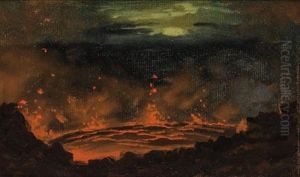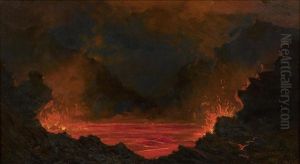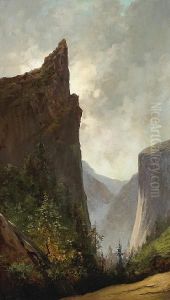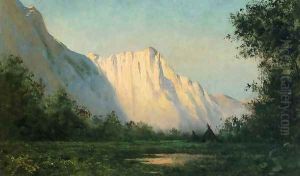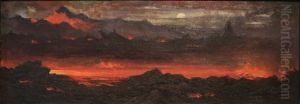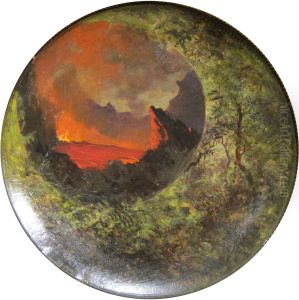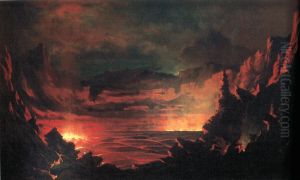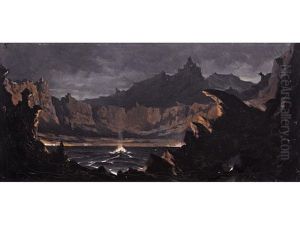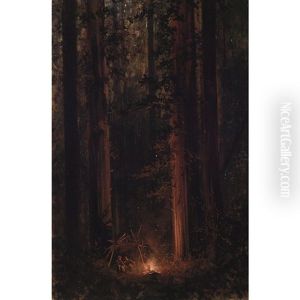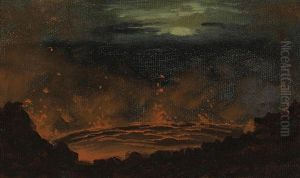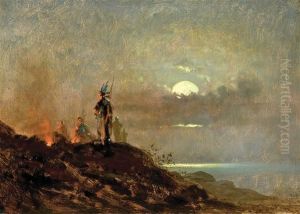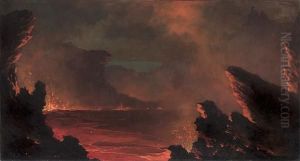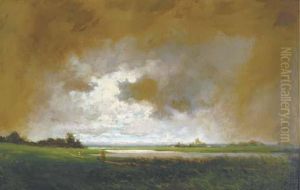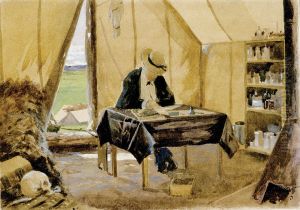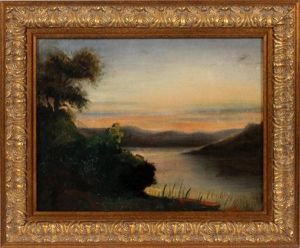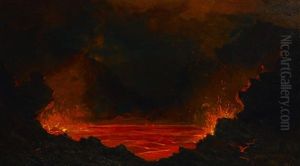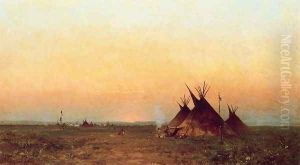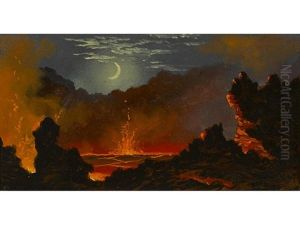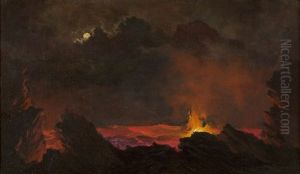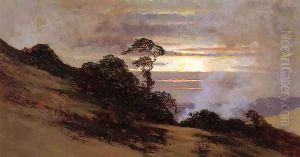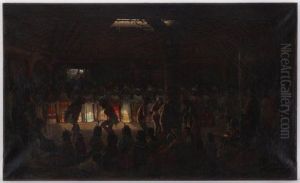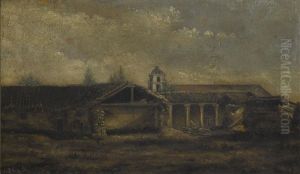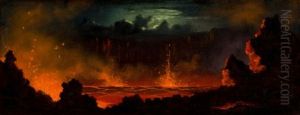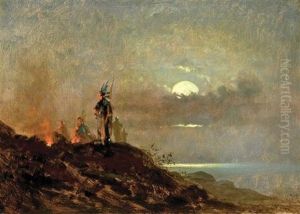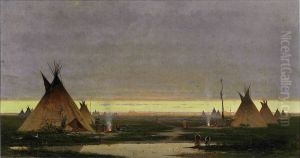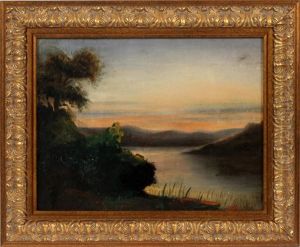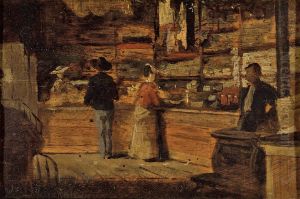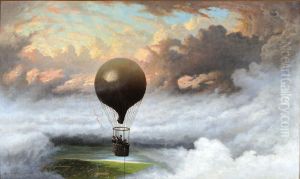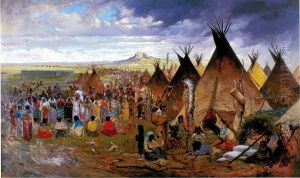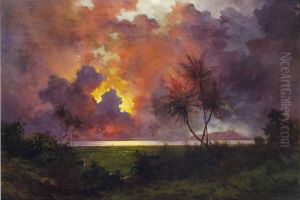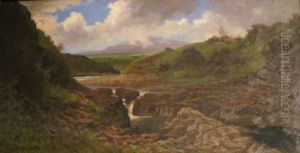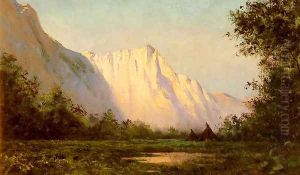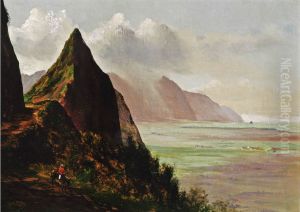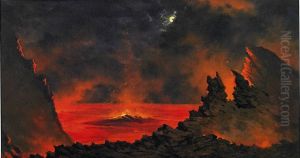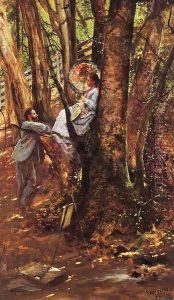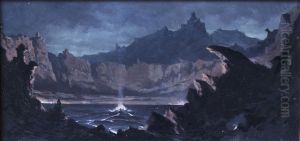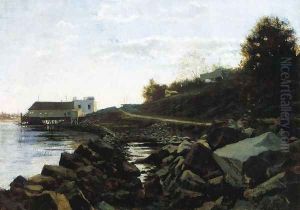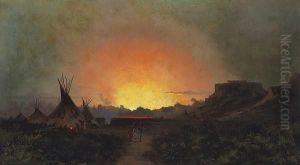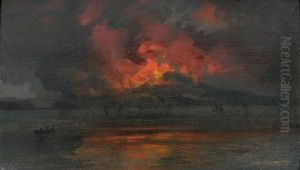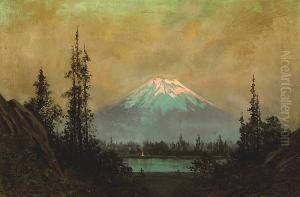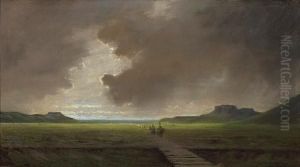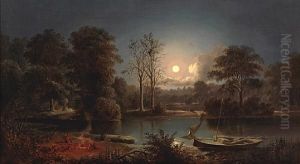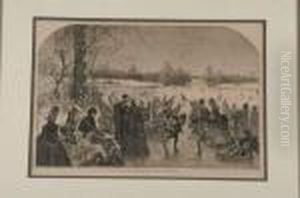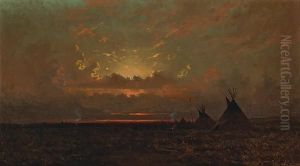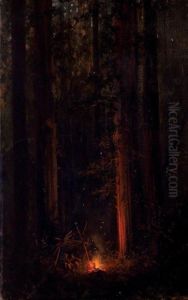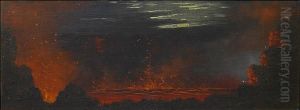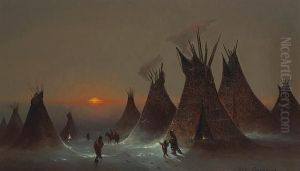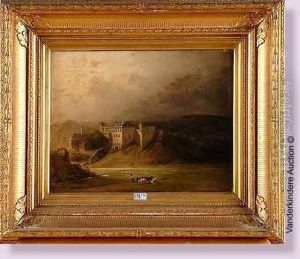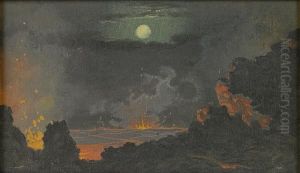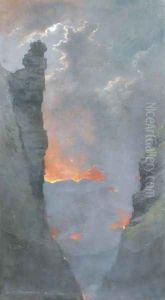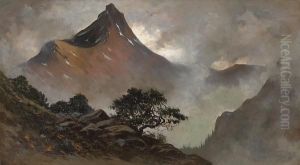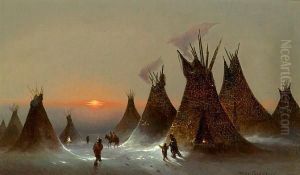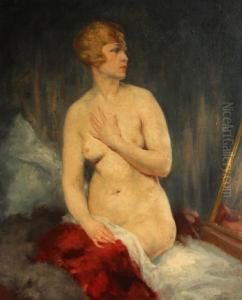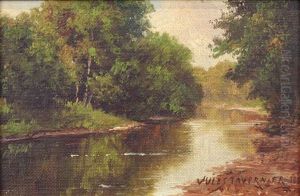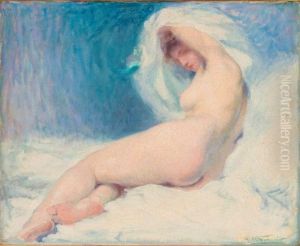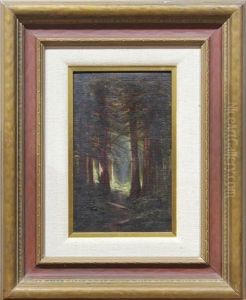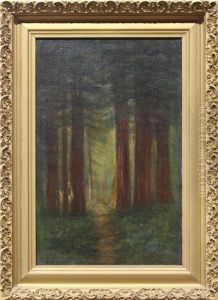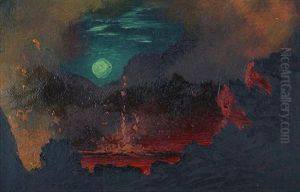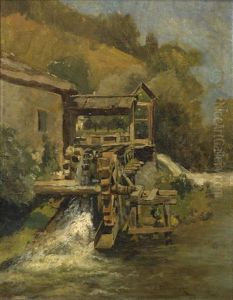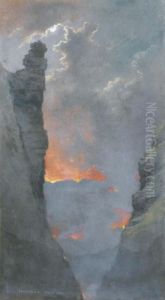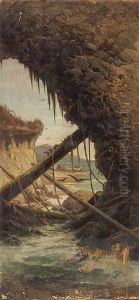Jules Tavernier Paintings
Jules Tavernier was a French painter and illustrator who is best known for his works that depict the American West. He was born in Paris, France, on April 27, 1844, to a family with artistic interests. Tavernier demonstrated artistic potential from a young age and went on to study under the prominent French historical painter Félix Joseph Barrias. He also attended the École des Beaux-Arts in Paris, which was the hub of academic art training in France.
Tavernier began his artistic career as an illustrator, contributing to French periodicals such as 'Le Monde Illustré'. His work caught the attention of various patrons, and he was commissioned to create illustrations for books and other publications. In 1864, seeking new opportunities, Tavernier went to London, where he continued to work as an illustrator.
In 1871, Tavernier moved to the United States, initially settling in New York City. He traveled extensively across the country, drawing inspiration from the diverse landscapes and cultures he encountered. His travels and artistic curiosity eventually brought him to California in 1874, where he became a central figure in the San Francisco art scene.
Tavernier's paintings from this period reflect the influence of the Barbizon School, characterized by a focus on the effects of light and atmosphere. He was particularly captivated by the natural beauty of California, especially the dramatic landscapes of Monterey and the surrounding areas. Tavernier is credited with introducing the Barbizon style to California and influencing a generation of American landscape painters.
One of Tavernier's most significant contributions to American art was his documentation of the Hawaiian Islands. In 1884, he visited Hawaii, where he was enchanted by the volcanic landscapes and the vibrant culture. Tavernier produced a series of paintings that captured the unique spirit of Hawaii, including dramatic depictions of the Kilauea volcano. These works were widely celebrated and contributed to his reputation as a master of landscape painting.
Despite his success, Tavernier struggled with financial difficulties and health problems, exacerbated by his fondness for alcohol. His final years were marked by economic hardship, and he died in Honolulu, Hawaii, on May 18, 1889. His legacy, however, endures through his evocative landscapes and his role in the development of the art of the American West. Tavernier's work is held in high regard, and his paintings can be found in various museums and private collections around the world.
